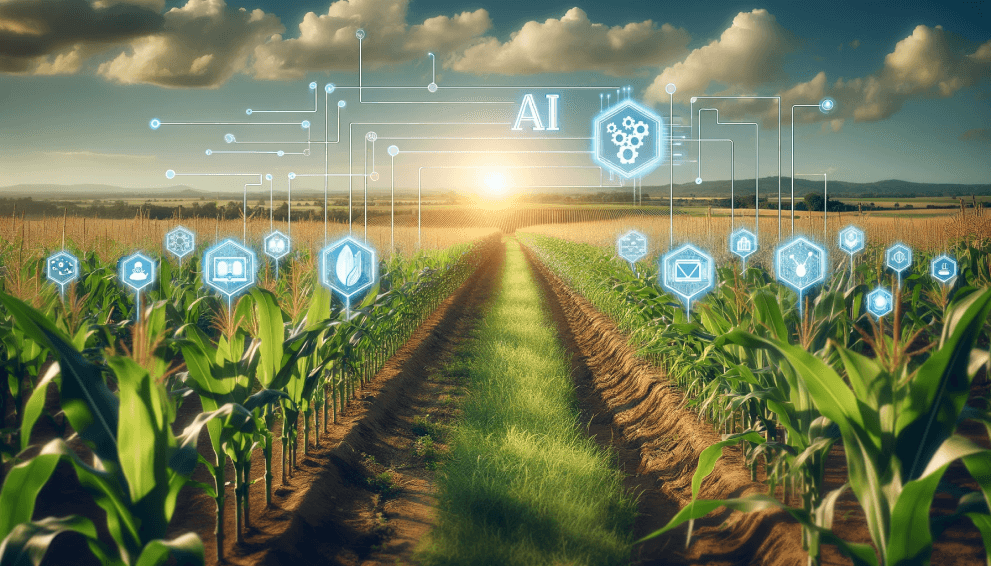The more globalized the food supply chain, the more critical is food safety. Artificial intelligence and advanced technologies drive innovation in traceability and transparency. This article shows ways in which innovations are changing food safety for good by giving better ways to trace and verify food products from farm to table.
What is Food Tracebility Software
Advanced food traceability software in the food market empowers suppliers, manufacturers, and retailers to obtain a real-time line of sight from supply to sale. It offers crystal-clear roots, processing, and distribution of foodstuffs for compliance, improved transparency, and driving quick responses if there happens to be an incident involving food safety or product recall.
This software plays a crucial role in improving accountability, reducing waste, and maintaining consumer trust in the food supply.
Why Traceability and Transparency Matter
Traceability and transparency are crucial for food safety. They allow producers, regulators, and consumers to follow the journey of food products through every stage of the supply chain. This visibility helps quickly identify and address any safety issues, ensuring that contaminated or unsafe products can be swiftly removed from the market. Additionally, it builds consumer trust, as people want to know where their food comes from and how it has been handled.
How AI is Changing Food Safety
First and foremost, AI can process vast reams of data with great accuracy and at very high speed. In this respect, the food safety dimension can have an assurance that there exists an ability for AI to monitor and determine how and when things may go wrong, even before they are major problems. For example, machine learning algorithms can identify production data patterns and anomalies that point out contamination or some other safety risk. The proactive approach means that problems can be noticed and resolved at a much faster rate than could be done through more traditional means.
Predictive Analytics
Predictive analytics, powered by AI, allows food producers to foresee potential safety issues by analyzing historical and real-time data. By identifying trends and correlations, AI can predict when and where problems are likely to occur, allowing for preventive measures to be taken. This reduces the risk of foodborne illnesses and recalls.
Enhanced Monitoring
AI-sourced sensing and monitoring systems track the production environment non-stop. Any deviation in temperature, humidity, or other conditions that may impact the safety of the food is flagged. Should this happen, operators will be alerted for immediate actions necessary, hence waylaying contamination way before it happens.
Advanced Technologies Improving Traceability
Alongside AI, several other advanced technologies are enhancing traceability in the food supply chain.
Blockchain Technology
Blockchain provides a decentralized, immutable ledger that keeps track of every single transaction and movement of the foodstuffs within its network. This basically means that once data is recorded, it cannot be revoked; hence, it gives a very reliable and transparent history of the product to the consumers and regulators for checking purposes on origin and handling prior to consumption.
Internet of Things (IoT)
The IoT devices, such as smart sensors and RFID tags, fitted in the food product, can trace and monitor the same continuously throughout the supply chain. Locations, temperature conditions, and other handling conditions are traced in real-time. This information is really vital in taking care of the food product at the best conditions during storage and transportation, thus reducing the potential risks of food spoilage and contamination.
Big Data Analytics
Big data analytics enables the processing and analysis of vast amounts of information collected from various sources in the food supply chain. By integrating data from production, transportation, and retail, big data analytics provides comprehensive insights into the entire supply chain. This helps identify inefficiencies, potential risks, and opportunities for improvement, leading to a safer and more reliable food system.
Benefits of Improved Traceability and Transparency
There are several advantages of integrating AI with other advanced technologies in food safety. Some of the most obvious advantages include:
- Fast Response to Contamination: Much quicker identification and solution to the safety issues can help lessen the impact of contamination incidents.
This builds trust among consumers about the origin and handling of food products. - Regulatory Compliance: Improved tractability at all stages of production will help the manufacturers to comply with regulations more effectively.
- Supply Chain Efficiency: When the supply chain is made more visible, areas of improvement will be highlighted that otherwise may have incurred hidden costs, such as waste.
Forward Together: Innovating for a Safer Tomorrow
At SGS Digicomply, our commitment to enhancing traceability and transparency in the food industry remains unwavering.

We recognize that food safety is a global concern, constantly challenged by new and evolving risks. That’s why we are dedicated to leveraging artificial intelligence and machine learning to transform food safety practices. Our innovative technologies enable us to better predict, manage, and mitigate risks, ensuring the integrity of the food supply chain. By continuously integrating advanced AI solutions, our food safety software to not just respond to, but proactively prevent safety issues, safeguarding every meal and protecting every community. Let’s continue to make food safety everyone's business, together.
Conclusion
Adopting AI and newer technologies is changing the face of food safety with never-before levels of traceability and transparency. This kind of innovation improves not only the detectability and prevention of safety issues but also builds trust with consumers, which is critical to regulatory compliance. As the food industry continues to evolve, embracing these technologies will be key to assuring a safe and reliable food supply for everyone.






.webp?width=1644&height=1254&name=Food%20Safety%20Dashboard%201%20(1).webp)
